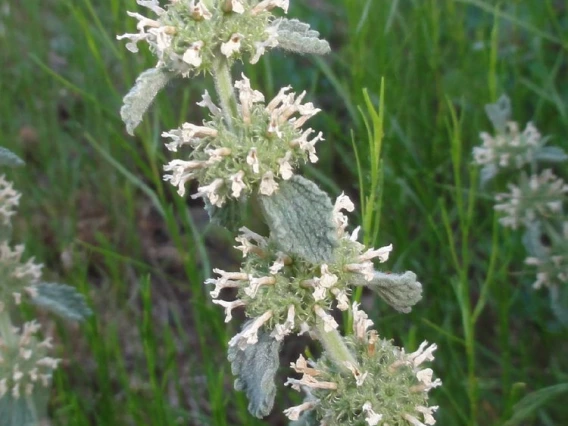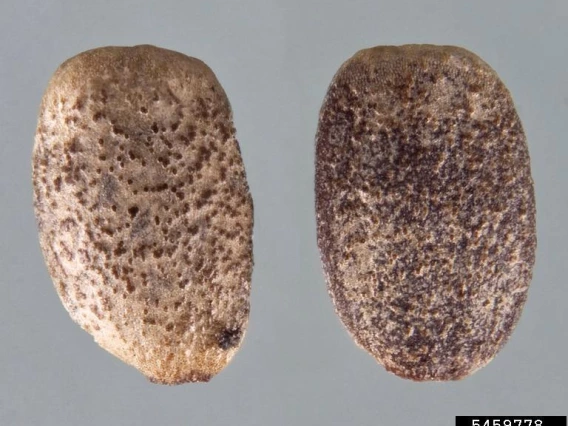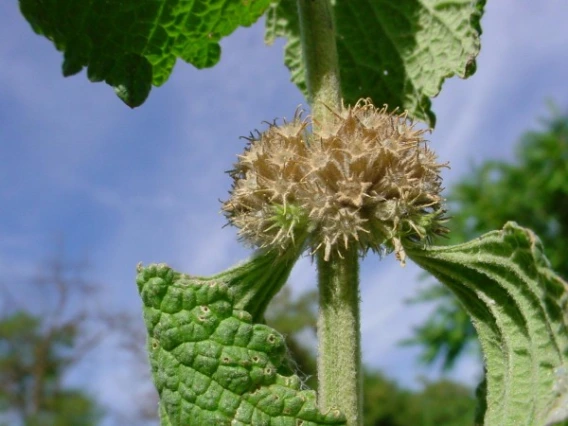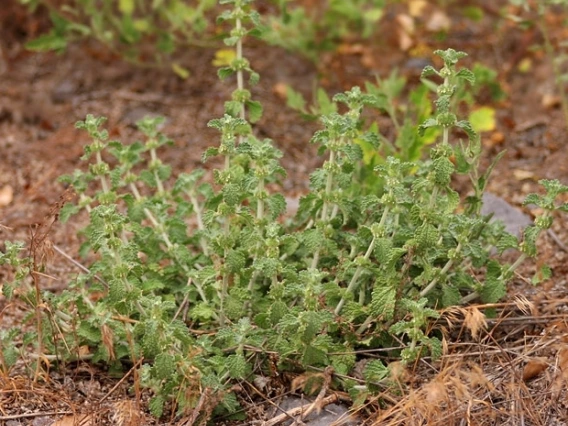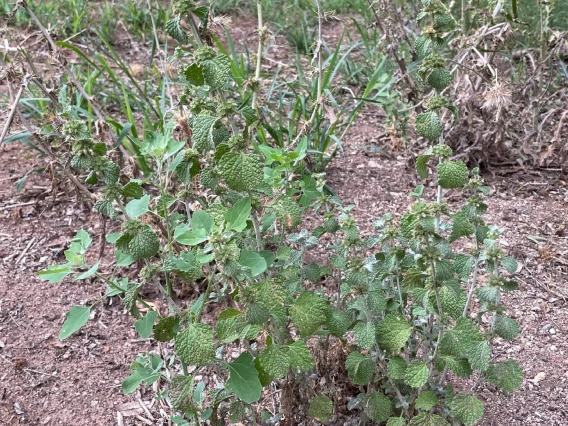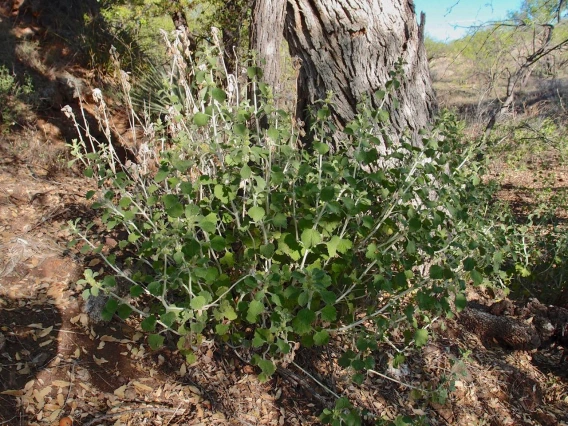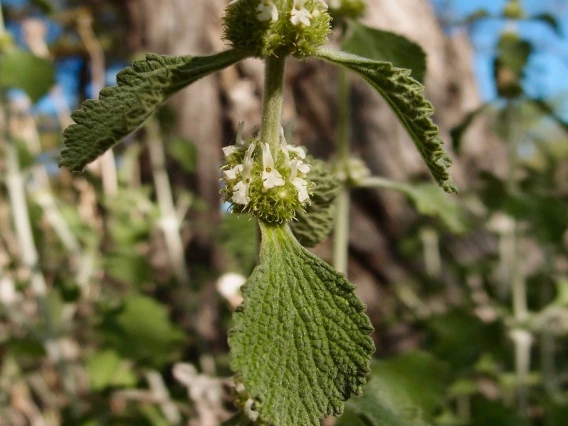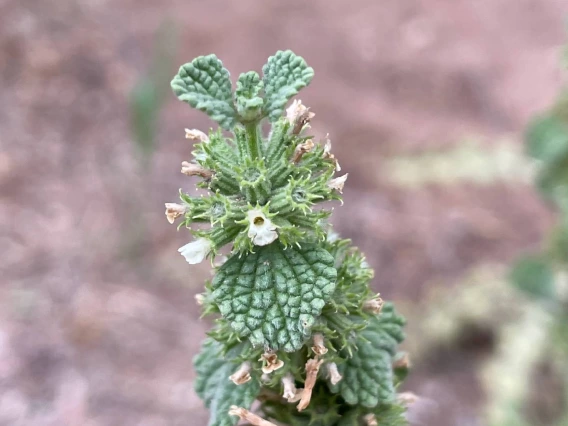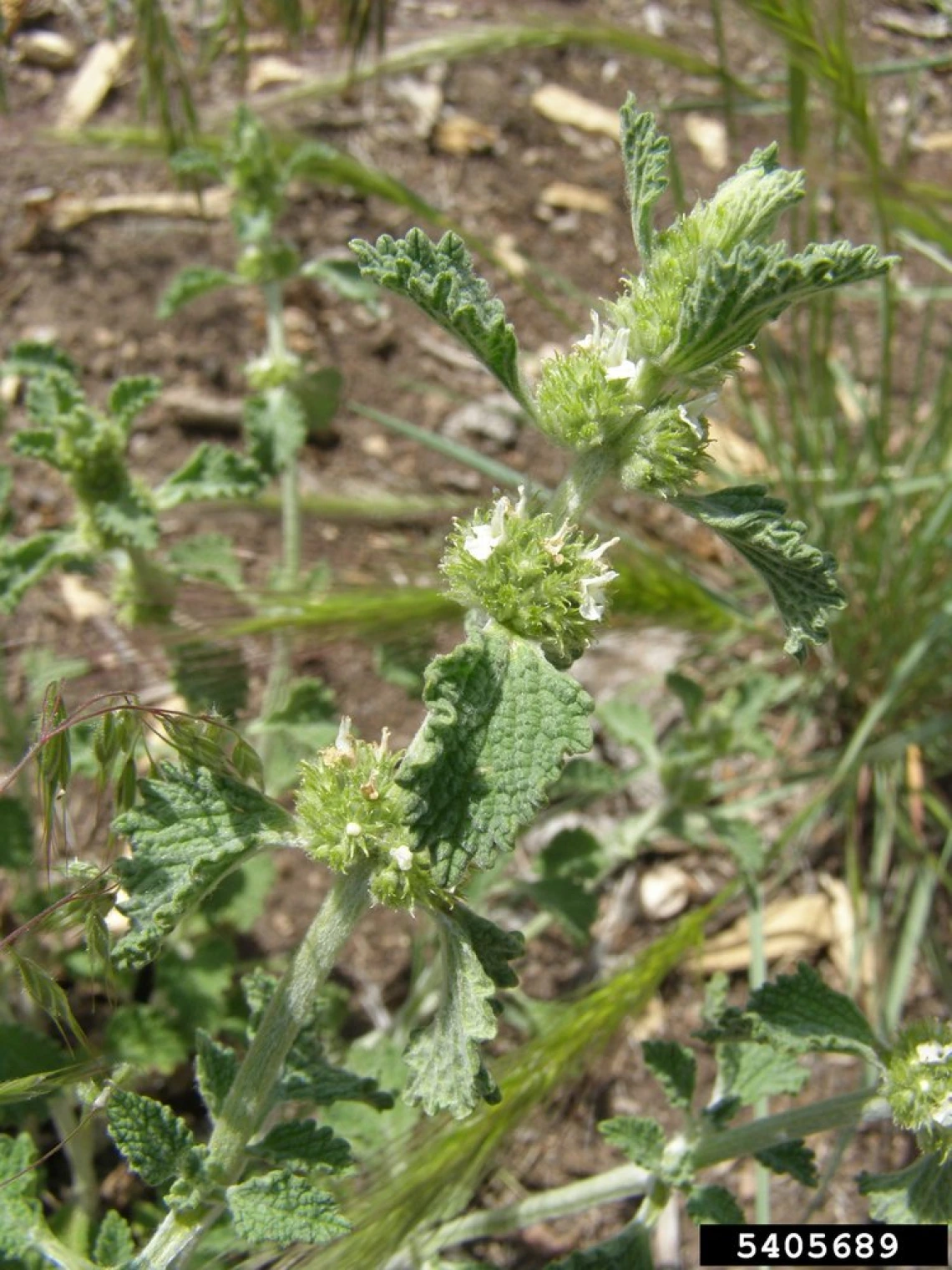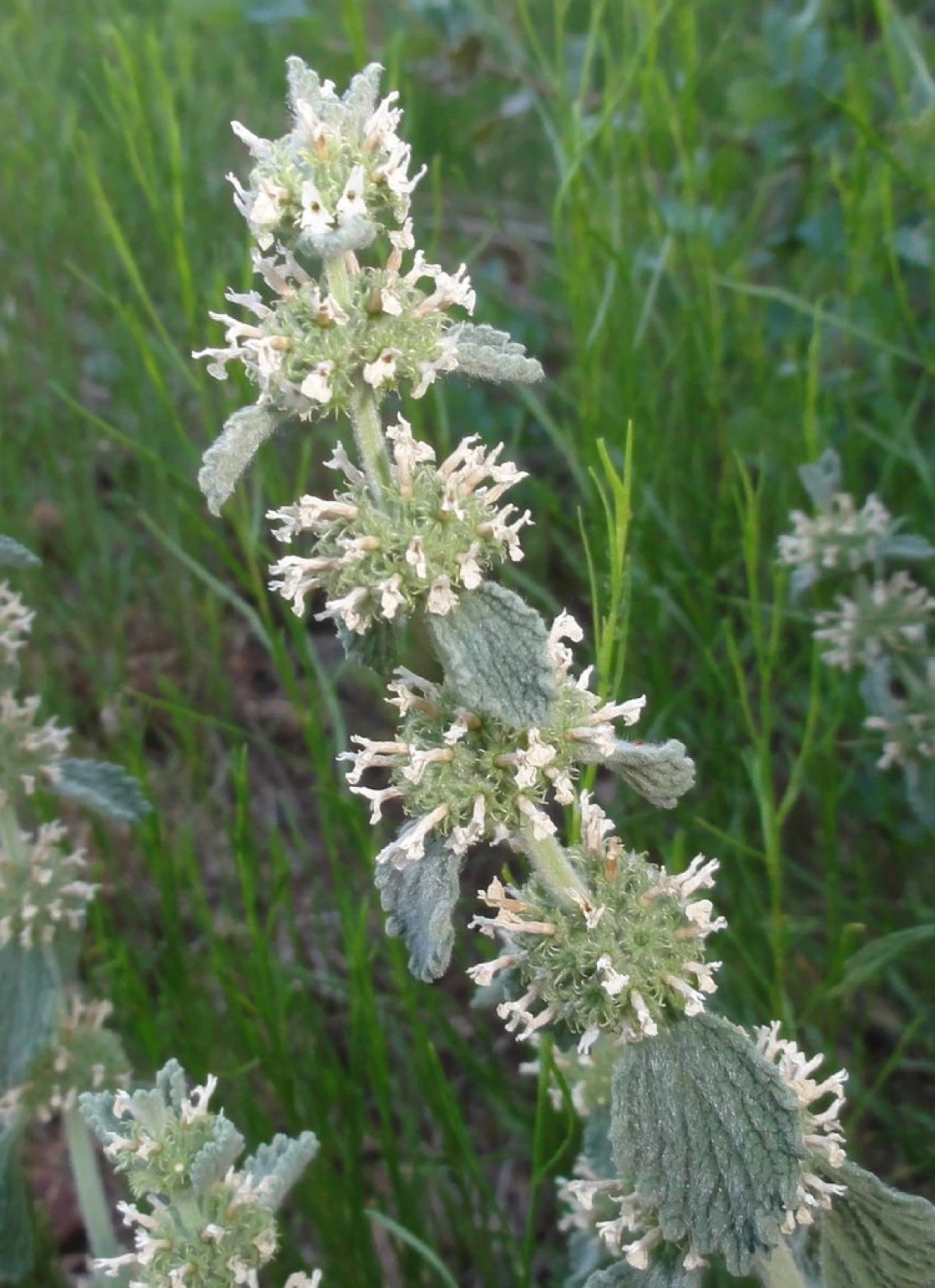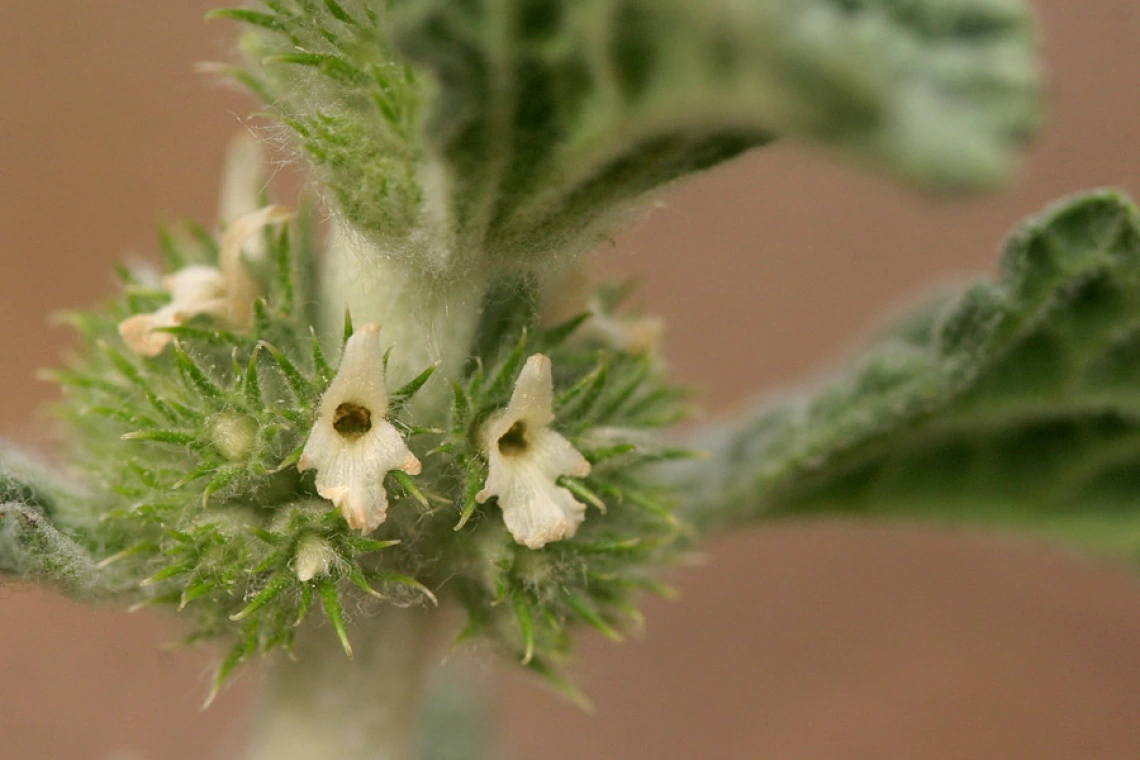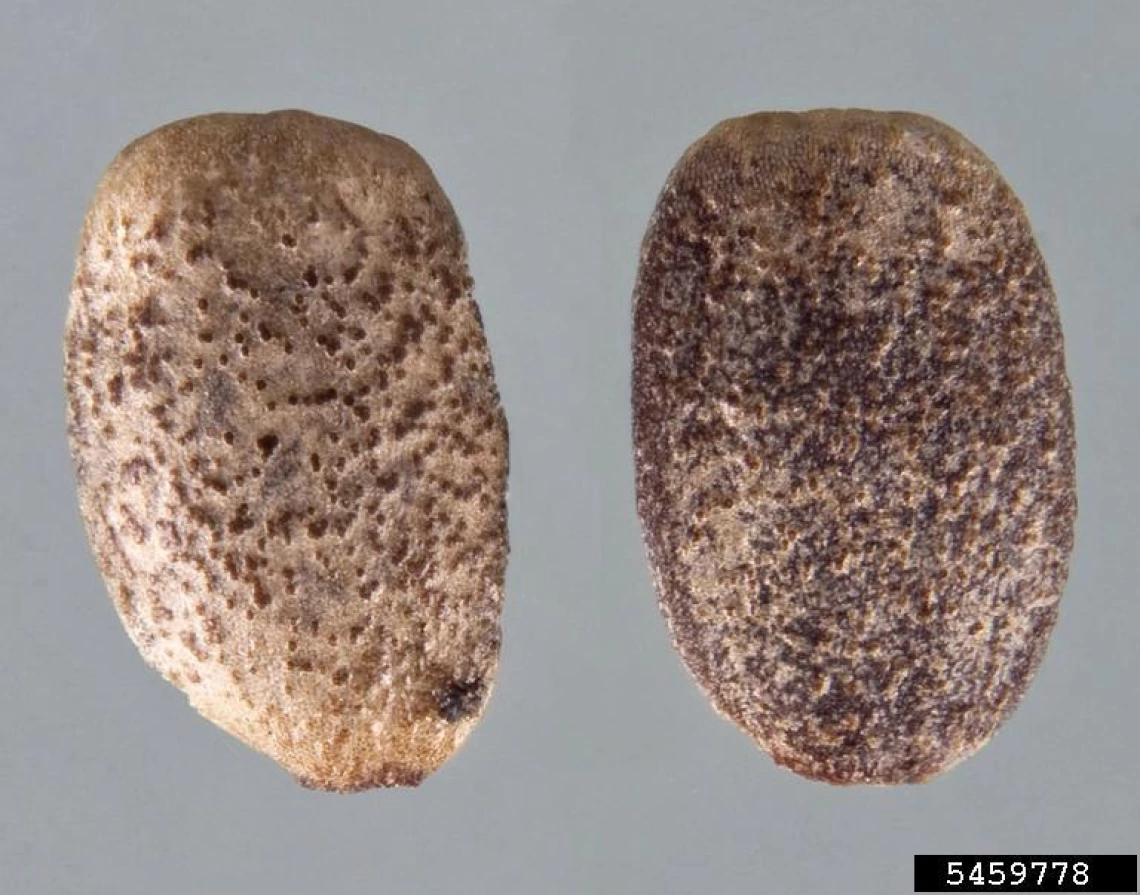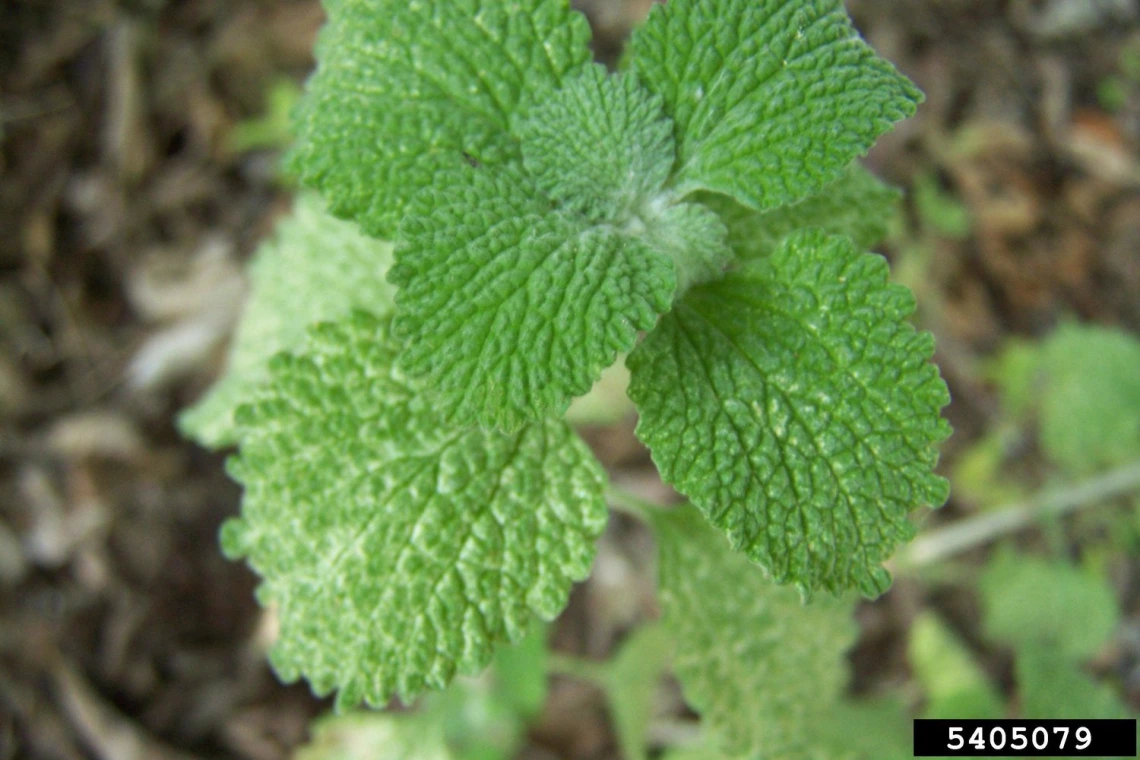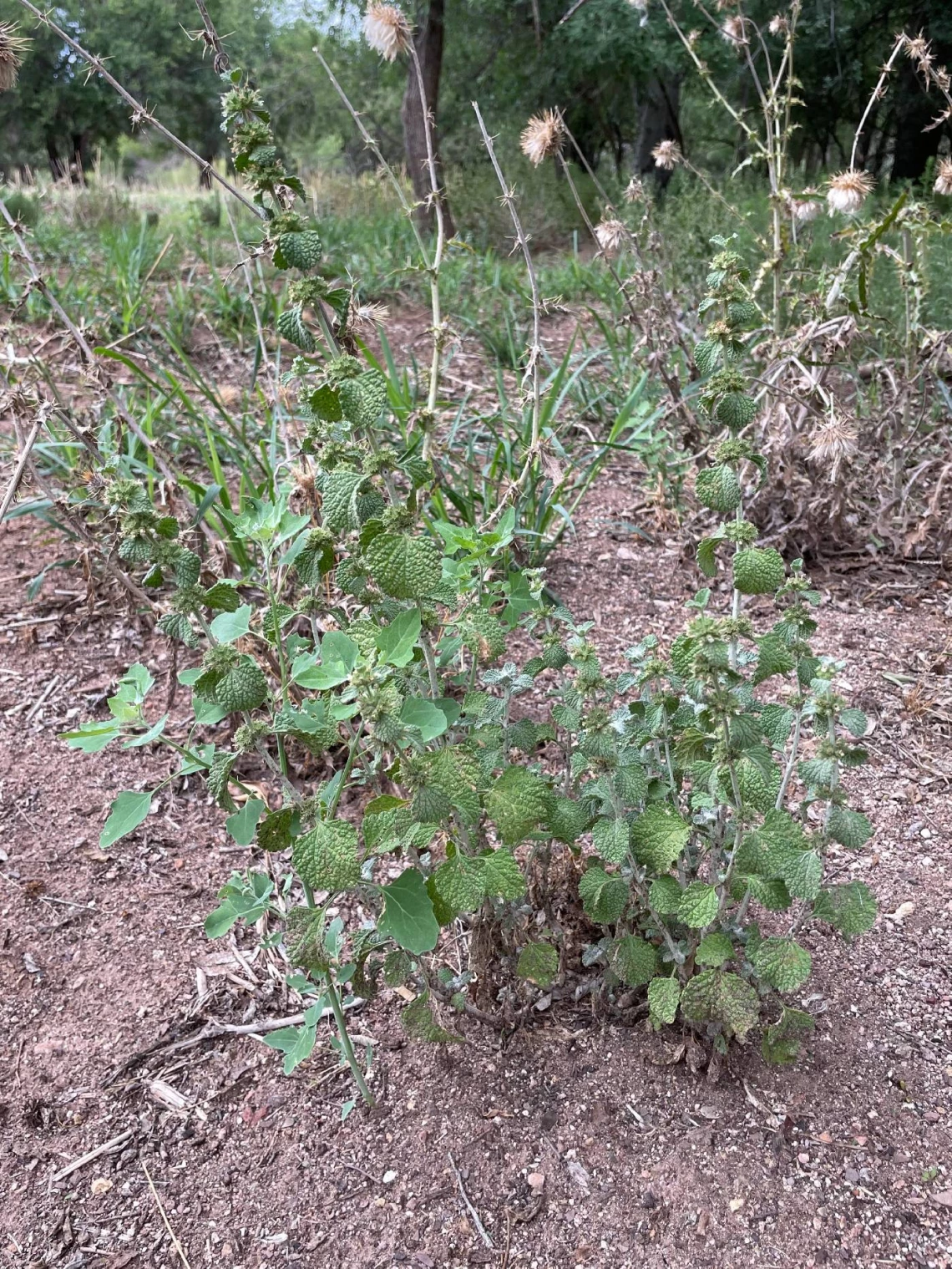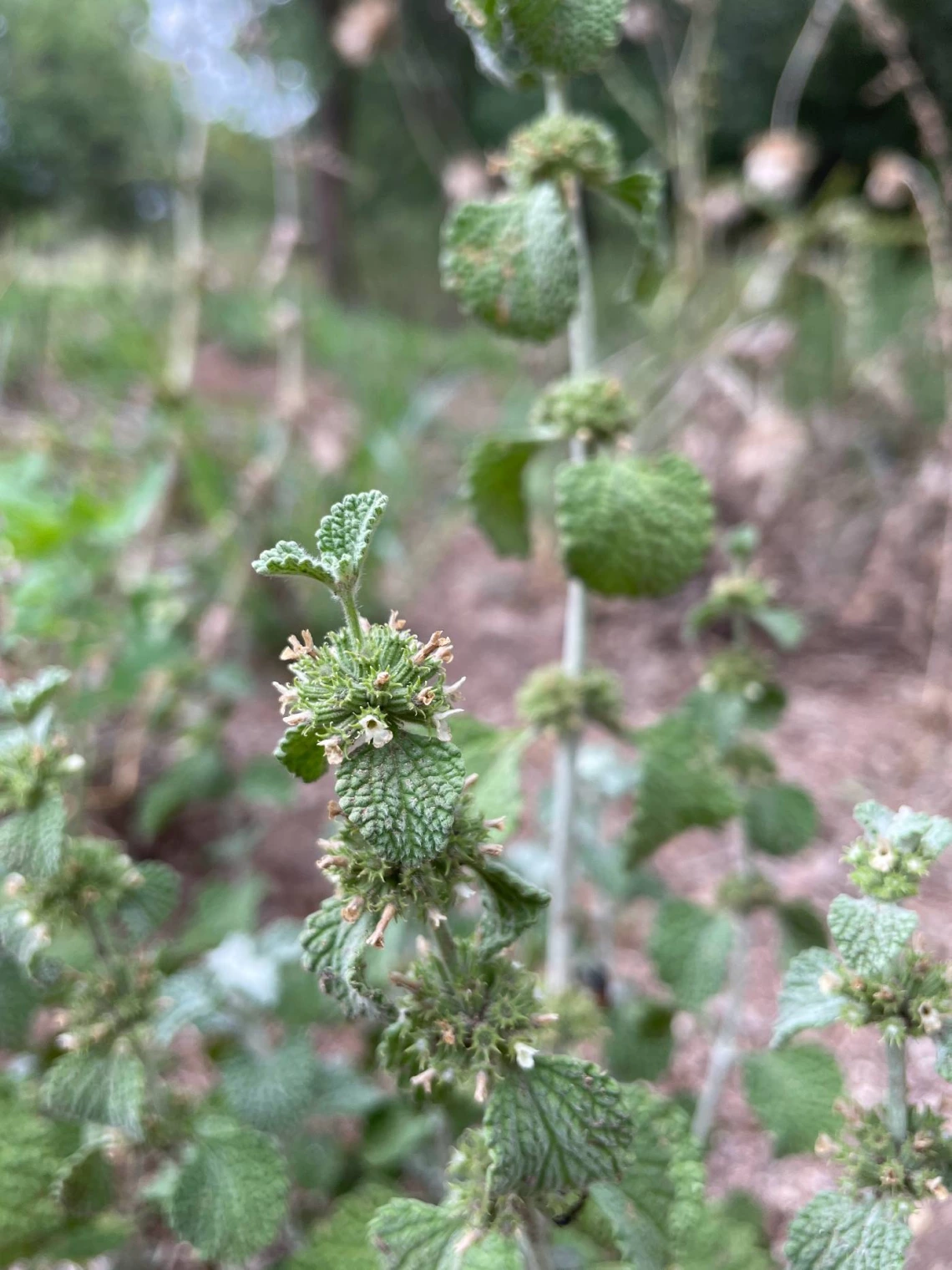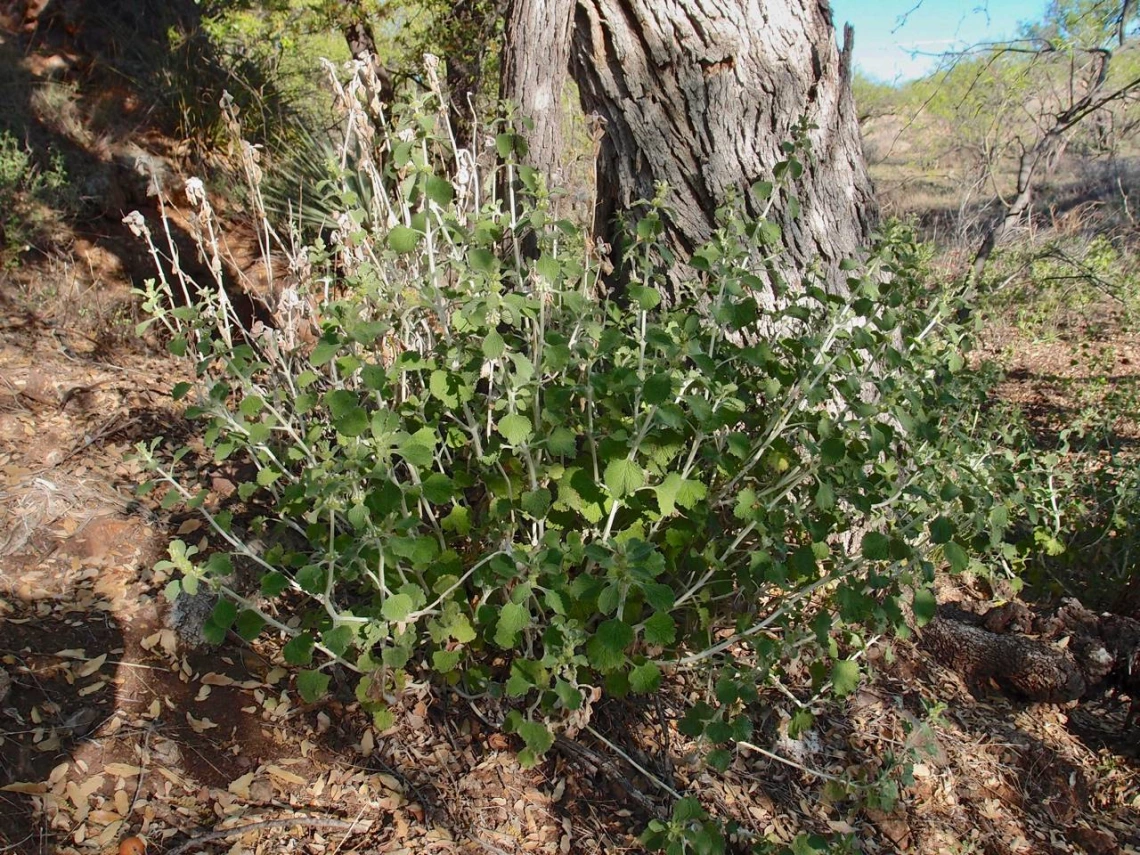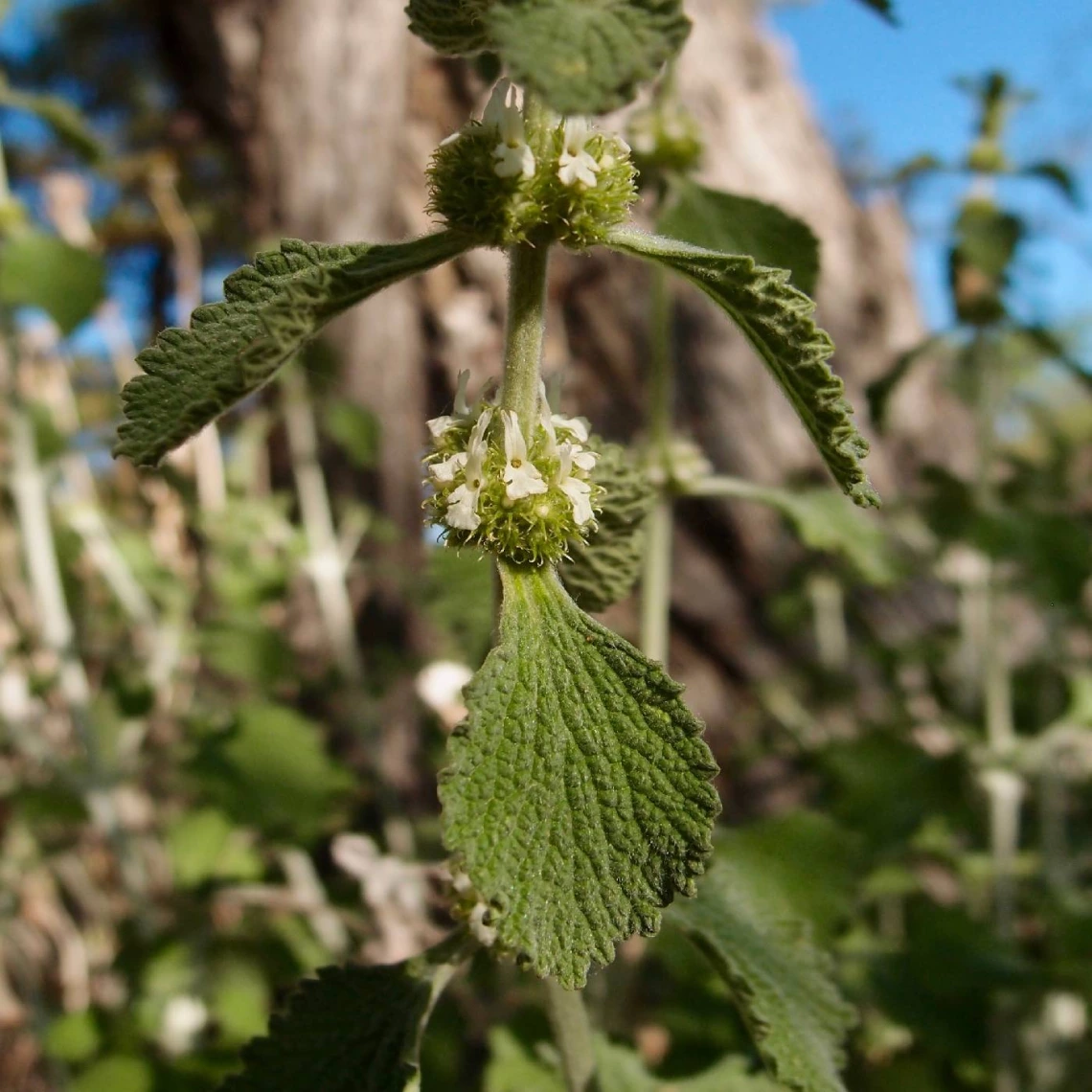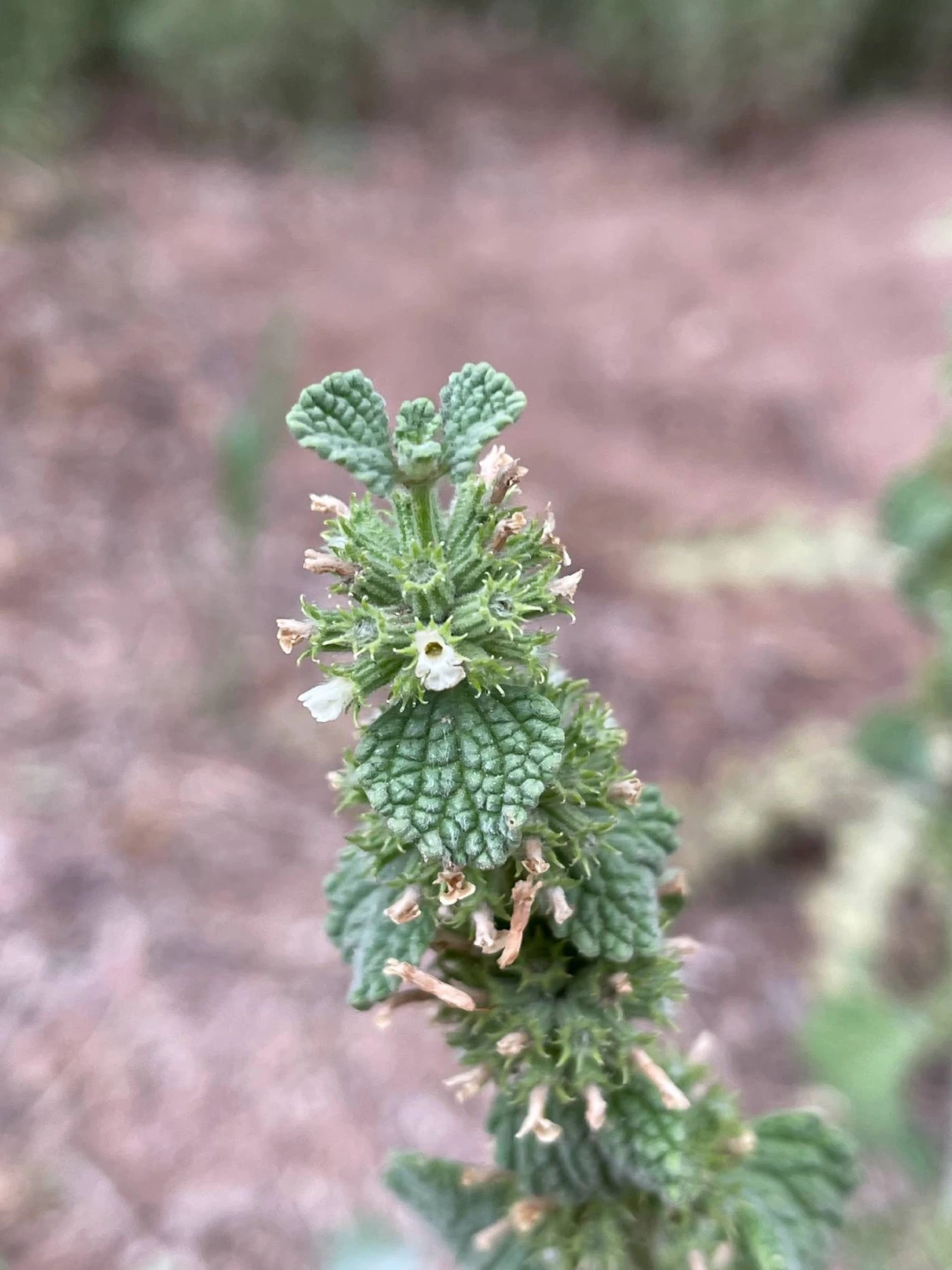Image
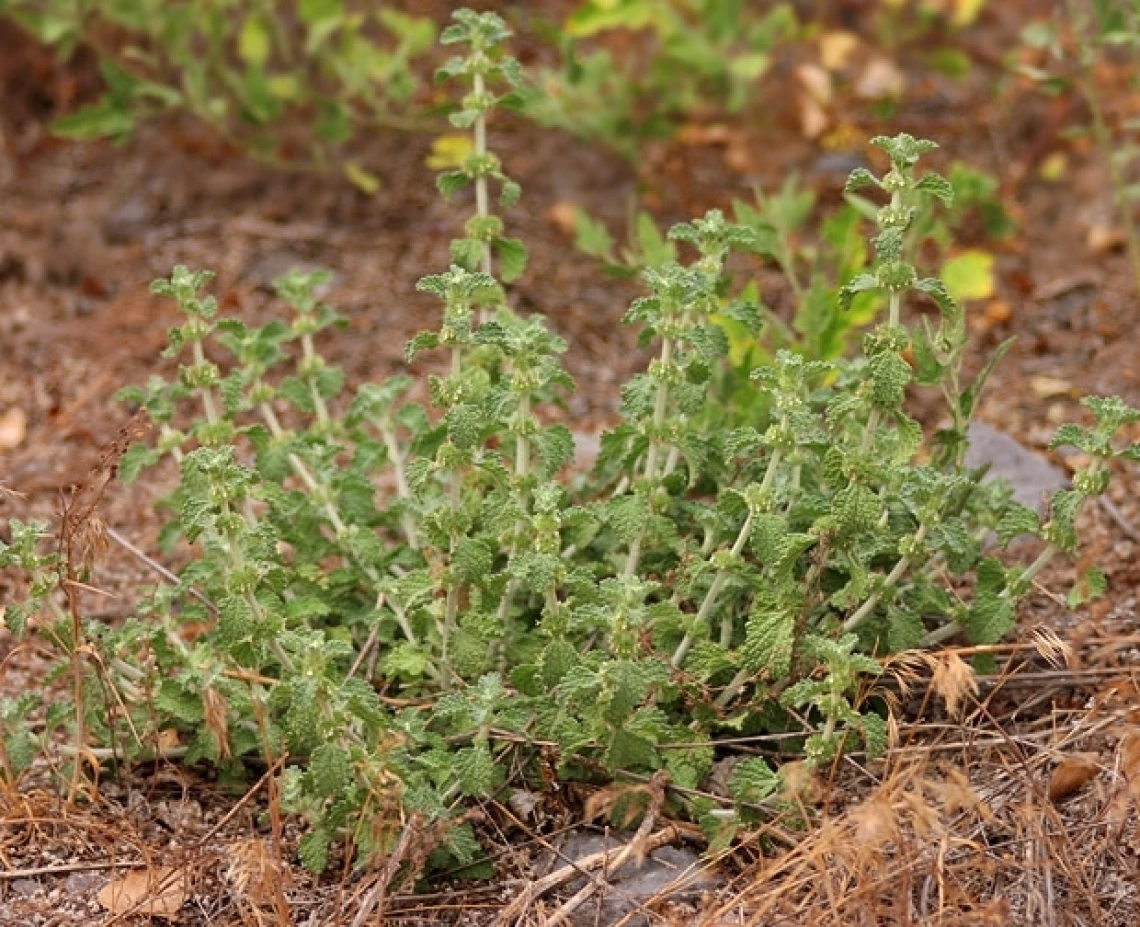
Horehound habit
Patrick Alexander, swbiodiversity.org/seinet
Common Name(s)
Horehound
White horehound
Scientific Name
Marrubium vulgare
Family
Mint family (Lamiaceae)
Reasons for concern
This plant forms large, dense monocultures, which have a very negative impact on native vegetation, wildlife, and pollinators. Its dense root system makes it very difficult to eradicate.
Classification
Non-native
Botanical description
Can be upright like small shrub, or creeping. Entire plant has pungent/aromatic odor.
Leaves
Oval to circular. Opposite on stem. Grayish-green. Toothed (jagged) edges, located below flower whorl. Lower surface covered with white woolly hairs. Upper surface wrinkled or puckered. About 1 ½ inches long.
Stem(s)
Up to 3 feet tall. Usually erect, 4-sided, with a somewhat woolly base.
Flowers
Tiny to ¼ inch long, white, growing in dense round clusters where leaf meets stem. Tubular. Blooms April through September.
Seeds
Each flower produces 4 dark brown nutlets, each containing one seed.
Roots
Taproot, branched, woody, with numerous fibrous lateral roots.
Native to
Europe
Where it grows
Desert, uplands, mountain, riparian. Along roadsides. Disturbed places. Elevation 2,000 to 8,000 feet.
Lifecycle
Perennial
Reproduction
From seeds and spreading roots
Weedy Characteristics
Can form dense monoculture stands over large areas, reducing native plant diversity. Seeds can remain viable up to 5 years.
Control Strategies
Do not let them go to seed. Hand pull or dig out seedlings. Dig out more mature plants with the roots, but be careful not to disturb the soil too much. Step down any loose dirt to prevent seeds from finding a welcome environment to germinate. The roots make it very hard to eradicate. Repeatedly monitor previous infestations for new growth. You may need to consult a professional. Plant desirable native species to outcompete invasives.
References
- White horehound a weed report from the book Weed Control in Natural Areas in the Western United States , 2013, DiTomaso, J.M., G.B. Kyser et al. Weed Research and Information Center, University of California
- Marrubium vulgare Texas invasive plant and pest council


